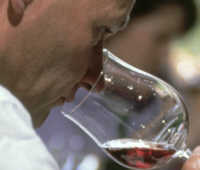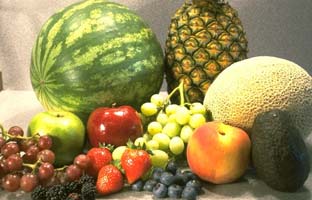The human sense of smell determines our lives much more than we realise. Well-being, sympathy, mood and many other sensations are essentially determined by the smells we take in. It is well known that the "nose" also plays a considerable role when enjoying a wine. The aroma of the wine has a decisive influence on whether we like the wine. Much more than appearance and taste, the nose also allows us to draw conclusions about grape varieties, origin and ageing

But how does the smell get into the wine? First of all, we have to answer the question of what smell actually is. When we smell something, our nose perceives the volatile components of the substance we are smelling. It is these volatile substances that are identified and consciously or unconsciously classified in the interaction between nose and brain. Every wine lover knows how difficult it is to classify in language what we have perceived. We orientate ourselves on familiar leading aromas, as we know them from fruits, flowers and other familiar things. Sometimes it is also the case that the perceived aroma in the wine and the assigned key aroma are actually based on the same chemical substance. If, for example, we smell vanilla in barrique-aged wines, then in both cases this is due to the perceived volatile vanillin. The same substance (IBMP = 2-isoburtyl-3-methoxypyrazine) is found in both green paprika and the corresponding aroma of some Cabernets.
It's theinteraction and the concentrationthat counts
However, it is rarely as simple as in the examples described above. Most of the time, the specific odour impression is created by a large number of chemical substances, all of which determine the overall impression in the most varied concentrations and with the most varied odour thresholds. The odour threshold is the concentration at which a substance is first perceived by most people. There is a hardly transparent interplay between concentration and odour threshold of different substances. A well-known example of this is the notorious TCA, which is responsible for cork taint. The odour threshold of TCA depends not only on the individual's highly varying sensitivity, but also on its interaction with other aromas. Thus, we recognise the "cork" in neutral white wines much sooner than in red wines or, for example, in a bouquet-accentuated Muscat.
It gets even crazier when we look at some mercaptans, for example. For example, Dr. Rainer Amann reports in "Der Badische Winzer 10/2002" about mercaptans that smell extremely unpleasant in high concentrations, but at lower concentrations make themselves felt as pleasant aromas such as cassis, passion fruit, grapefruit or even roasted coffee.
Where do the aromas come from?
In wine literature, one reads again and again about primary, secondary or tertiary aromas. This distinction is also the key to the origin of the aromas, i.e. the substances that make up the olfactory impression in dissolved form.
 |
| Associations with fruits are usually assigned to the primary aromas |
With primary arom as, the substance is already contained in the grape. An example is the aroma of blackcurrant typical of Scheurebe. This is clearly a primary aroma. Nevertheless, an unfermented Scheurebe grape does not smell like blackcurrant. The substance responsible for this (MMP = 4-mercapto-4-methyl-2-pentanone) is indeed contained in the grape, but not in a free, i.e. perceptible form. Only through the fermentation process is MNP released, i.e. sensory perceptible.
Secondary aromas are aroma-determining substances that are only created during the processing (grape processing, fermentation, ageing). These include desired aromas, e.g. vanilla or roasted aromas, which are transferred from the barriques into the wine. However, many undesirable aromas (= wine faults) are also to be classified here, such as ethyl mercaptan, which is produced during fermentation and is held responsible for the "Böckser". Ethyl mercaptan is odour-neutralised in the copper fining used to combat Böckser.
The tertiary aromas only develop during the storage of the wine. For example, the petrol tone typical of matured Rieslings and very polarising for many wine lovers. For some it is simply annoying, others find it a great pleasure. The chemical substance behind it is TDN (1,1,6-trimethyl-1,2-dihidronaphtaline).
The most common and best-known fault is also associated with storage aromas: cork taint. This is caused by a contamination of the wine with TCA (2,4,6-trichloroanisole), which is produced in the natural cork under still unexplained circumstances and affects the quality of every 10th to 20th wine. The example of TCA impressively proves how low the concentration of substances can be to clearly make a wine appear faulty to the nose: According to Dr. Ulrich Fischer (SLFA Neustadt), even a concentration of 5 to 10 parts of TCA per one billion! Parts of wine is clearly recognised by most people as cork taint.
Incidentally, the classification of aromas is not uniform in the literature. When speaking or writing about secondary aromas, one should always consider the definition used by the respective author.
Much is still unclear
Even if in many cases a clear connection can already be made between the sensory smell perception in wines and the chemical compounds that cause it, most of the questions in this regard still remain unanswered. We are not yet in a position to construct a fragrant Riesling from a litre of water with the addition of the appropriate substances. Fortunately.